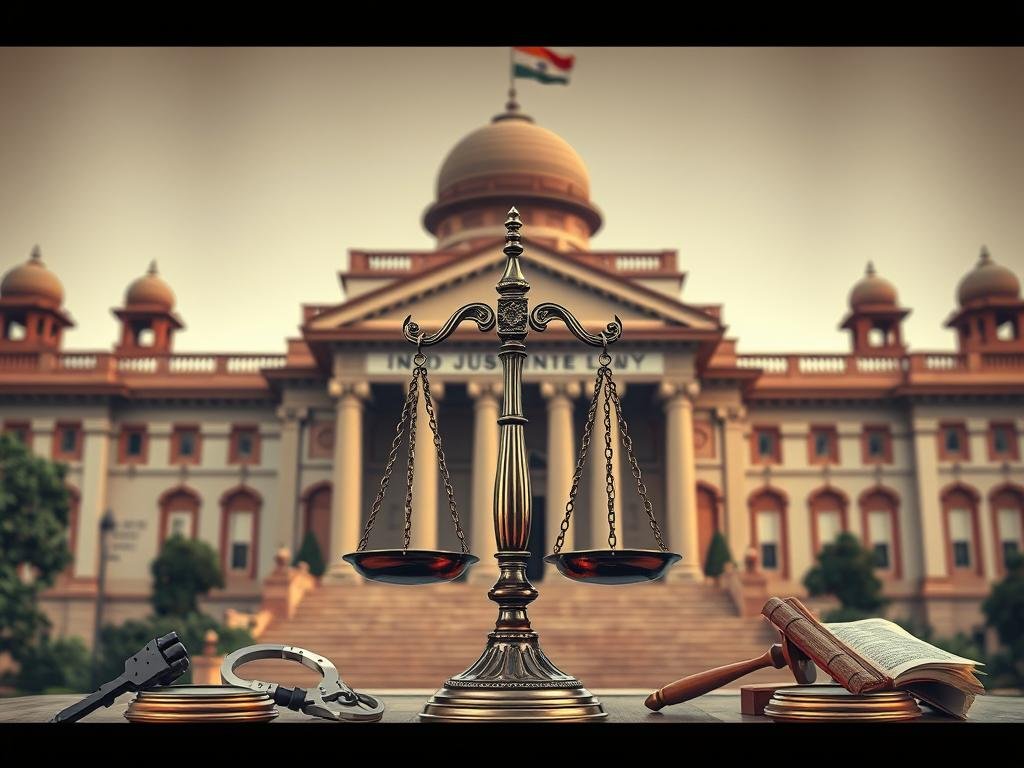Trending

Did you know that criminal justice in India deals with 30 million cases annually? These are the reasons why having knowledge of the laws to govern our country is important.Criminal law in India is the backbone of justice, providing for the order of society and safeguarding the rights of the individual. The object behind the blog is to enable readers with a clear and more specific understanding about how criminal laws in India have evolved, focusing on the structure and development of those laws.

The historical development of criminal laws in India has undergone several phases, each molded by the political and cultural context of their times.
The two guiding documents of ancient India were Dharmashastras and Kautilya’s Arthashastra, which described governance, administration, and the control of crime. They provided a framework for the rules governing social behavior, rights over property, and punishments for different crimes. Crimes such as theft, adultery, and murder were discussed with specific punishment, generally towards re-establishing social balance and justice.
During the medieval period, the Islamic rulers had established a dual system of law: Sharia law applied to Muslims, while local customs for the rest were applicable. The Mughal emperors like Akbar sought to standardize the law but simultaneously created space for regional practices. Criminal law under the influence of Islamic jurisprudence remained majorly focused on the meting out of legal punishment as well as the reform of morals.
The most substantial change in Indian criminal law happened when British ruled. Britain came and brought with them a codified law system that was mainly on common law in Britain, keeping the aim on control, governance, and colonial interest. Indian Penal Code 1860 was drafted by Lord Macaulay, forming the base of the criminal law system in India. It standardized definitions of offenses and punishments. The Criminal Procedure Code (CrPC) of 1861 and the Indian Evidence Act of 1872 further defined how crimes were investigated, tried, and evidenced. Such laws were intended to strengthen British control but also helped structure India’s criminal law framework.
After independence, India modified the basic structure of IPC, CrPC, and Evidence Act. It amended to represent its independent India’s needful requirements, with the insertion of social justice and equity provisions. Special enactments were made to modern and specific issues like child exploitation, domestic violence, or gender inequality, including special legislations like the Dowry Prohibition Act, 1961; POCSO Act, 2012.
The new reform in Indian criminal law is by way of enactment of the Bhartiya Nyaya Sanhita (BNS), 2023 which has replaced the IPC; Bhartiya Nagarik Suraksha Sanhita (BNSS), 2023 replacing the CrPC; and Bhartiya Sakshya Adhiniyam, 2023 replacing the Evidence Act. This modernization system highlights the speedy delivery of justice, protecting the victim, and other emerging crimes such as cybercrimes and organized crimes.
This evolution shows India’s journey from an ancient customary society to a modern democracy striving for justice, equality, and protection of rights through a structured and continually evolving legal framework.
The Indian Constitution provides important safeguards in criminal law, ensuring justice for all. Some of the important provisions are: Article 14, which grants equal protection of laws and forbids discrimination; Article 20 protects a person from self-incrimination, with protection against double jeopardy and ex post facto laws; and Article 21 ensures right to life and liberty by requiring a fair and just process for deprivation of liberty. In that context, Article 22 protects arbitrary arrest and detention, bringing persons under proper charges before the court, within 24 hours, whereas Article 39A provides equal opportunities before justice as well as free legal aid particularly in respect of those incapable to receive

The Bhartiya Nyaya Sanhita (BNS), 2023 supersedes the Indian Penal Code (IPC) and sets forth the Indian substantive criminal law. It defines several crimes, classifies them, and provides punishments for each of them. Some of the most striking features of BNS are:
Increased Punishment for Sexual Offences: BNS also provides strict punishments to sexual offences by strengthening punishment of rape and child sexual assault. Further, harassment through technology has also been criminalized.
Mob Lynching: Another crime incorporated into the BNS is that of mob lynching, in which a group would be liable for an unlawful murder or injuries in circumstances related to communal or caste or religion discrimination. Such crimes will invite imprisonment for the whole of a person’s life or even death.
Organized Crime: BNS tackles organized crime syndicates and terror organizations with provisions aimed at countering their activities and punishing individuals involved in such operations.
Cybercrime: With the advancement of technology, BNS specifically contains provisions for cybercrimes like hacking, identity theft, and online harassment. penalty.

The Bhartiya Nagarik Suraksha Sanhita, 2023 succeeds the Criminal Procedure Code or CrPC and provides an overall framework for criminal procedure in India, covering rights of the accused, procedural fairness, and timeline of investigation and trial. Significant features of BNSS are :
Time-Bound Justice: The BNSS presents time-bound investigation and timelines for trial, ensuring expeditious and effective administration of justice.
Digital Justice: With the advent of digital technology, BNSS enables e-FIRs, trials through the internet, and digital evidence in court. This should make the legal system more accessible and transparent.
The Protection of the Witness and Victim: BNSS focuses on the protection of victims and witnesses, such as anonymity of testimonies and protection of vulnerable witnesses in serious crimes, such as sexual offenses and organized crime.
The Bhartiya Sakshya Adhiniyam (BSA), 2023 replaces the Indian Evidence Act and governs the admissibility and handling of evidence in criminal trials. Key features of the BSA include:
Electronic Evidence: The Bhartiya Sakshya Adhiniyam validates electronic evidence, including digital records, emails, and social media posts, as legally valid and admissible in court. This is essential for evolving investigation over cybercrimes.
Forensic Evidence: The law uses forensic evidence, such as DNA, fingerprints, and autopsy reports, in trying to strengthen their case in the cause of justice.
Witness Protection: It enacts provisions for witness protection, particularly in high-risk cases and identities for witnesses if they become necessary.

The Prevention of Corruption Act (PCA) is one of the most important special laws in India, aimed at curbing corruption among public officials. This prevents corruption at the hands of government officials through making the criminal offense punishable to accept bribes, to abuse positions or office and other forms of corrupt practices.There are specific provisions on penalising the bribe givers as well.
Key Features:
Definition of Public Servants: The law broadly defines public servants, encompassing the government employees, public sector undertaking employees, and even people working in NGOs receiving funding from the government.
Punishments: PCA metes out severe punishment on corrupt practices through imprisonment and a fine.
Recent Amendments: In the year 2018 amendments were made to the law to bring a provision for protection of whistleblower as well as other issues arising regarding private sector corruption.
The UAPA is the other significant special criminal law to check terrorism and illegal activities that threaten national security. It gives the authority to the government to declare an organization or group as an unlawful one that threatens India’s integrity and sovereignty. It provides for detention of a person without trial for specific reasons.
Key Features:
Banning of Terrorist Organizations: The Act empowers the government to prohibit any organization which is perceived to be engaged in terrorism or incites violence against the nation.
Detention without Trial: UAPA provides for detention for a specified period of time, before trial, for particular reasons cited under national security.
Punishment of Terrorism: The Act enunciates various offenses connected with terrorism, including the recruitment of members for terrorist organizations and collecting funds for terrorism. Punishments are severe, and in certain aggravated terrorist activities, they extend to capital punishment.
NDPS Act refers to that specialized law formulated to restrict and regulate the banned drug dealings in India. he Act makes the production, manufacture, possession, sale, purchase, transport, warehousing, use, consumption, inter-State import, inter-State export, import into India, export from India, and transshipment of narcotic drugs and psychotropic substances criminalized.
Key Features
Harsh Punishment for Drugs Offenses: The Act gives harsh punishment regarding the trade and abuse of narcotic drugs, whereby imprisonment runs up to the sentence.
Prevention: It stresses on rehabilitation of drug addict as much as it gives importance to punishment.
Administration of Medical Drugs: This Act regulates the legal consumption of narcotic drugs within the medical field.
The NDPS Act has served to significantly check the illicit drug trade but is under severe criticism on account of harsh sentences that it carries, including mandatory death sentences for the trafficker dealing in huge quantities of narcotic drugs which some might view as against human rights.
The POCSO Act is a special criminal law intended to protect the children from sexual abuse, harassment, and exploitation. The Act provides a comprehensive legal structure to deal with sexual offenses committed against minors below 18 years of age. The Act involves several offenses such as sexual assault, sexual harassment, and child pornography.
Key Features:
Child-Friendly Provisions: The POCSO Act aims at the legal process that is child-sensitive, as there are special courts and procedures in place to maintain the privacy and dignity of the victim.
Punishments: The law is severe against the offenders as well; the sentences given may be a term of imprisonment or even life imprisonment and sometimes the death penalty also.
Child-Friendly Processes: This law provides an avenue to have support persons for the victim, provide child-friendly procedures for documentation of evidence, and develop child-friendly courts.
The POCSO Act is critically a legislation on child safety, that would provide legal mechanisms by which children shall be safeguarded from sex offenses. The process of courts also help the victims when the system offers support.
An act designed to protect women from Domestic Violence was enacted in the year 2005, commonly known as the Domestic Violence Act. This act provides a body of law to offer legal protection to women from domestic violence, including physical, emotional, economic, and sexual abuse.
Key Features:
Definition of Domestic Violence: The Act defines domestic violence in an entirely comprehensive manner. It includes physical, emotional economic and sexual abuse and threats.I
Protection Orders and Relief: It allows women to apply for the courts to issue protection orders that will prevent further acts of violence and provides numerous types of relief, among them financial compensation, residence orders, and child custody.
Access to support services: Victims have also been made available shelters, medical care and legal aid.
Domestic violence act has served as the biggest protection and aid for abused women in their houses. Nonetheless, its efficacy has remained tainted with issues of under-reporting, unawareness of the law and long durations of legal process.

Information Technology Act (IT Act) is an important act regarding cybercrime and e-commerce. It was made for providing legal recognition of electronic transactions, digital signatures, and regulating cybercrimes. In addition to that, the law offers a legal framework for investigations regarding cyber offenses like hacking, identity theft, and cyber bullying.
Key Features:
Cyber Offenses: The IT Act criminalizes hacking, theft of identity, cyber stalking, and the posting or forwarding of obscene material.
Digital Transactional Recognition: This law affords recognition to e-contracts, digital signature and others of online transaction.
Cyber Security: It provides provisions regarding measures to safeguard computer, system and networks and its data along with mechanisms to probe into cyber crimes.
Although the IT Act has been instrumental in regulating the digital space of India, its scope has been criticized as being outdated in addressing modern cyber threats. However, amendments and new regulations continue to update the law with changing challenges.
According to this act, juvenile crimes are often a result of circumstances rather than the child’s character. These problems are being addressed through special programs designed to help these young offenders become useful members of society.
The act establishes Special Juvenile Justice Boards and Child Welfare Committees for youth offenders.These committees prepare specific proposals for each child, providing for counseling and education.It establishes locations such as Observation Homes and Special Homes to aid these kidsThough the act is considered as progressing, it faces quite several challenges. These range from inadequate resources to improper training.
| Key Provisions of the Juvenile Justice Act | Objectives of the Act |
|---|---|
|
|
Indian criminal law has undergone tremendous changes, with the change in society, technology, and the requirement for effective justice. From ancient to colonial and then to the current system, it depicts the Indian efforts to achieve justice along with the protection of rights of individuals. Early criminal law was arbitrary and mostly based upon religious or customary practices but the British colonial legal system imposed laws such as the Indian Penal Code (IPC), which became the backbone of modern criminal law. Recently, India has experienced reforms in criminal law to face emerging problems. For example BNS, BNSS & BAS.These laws signal a major step toward a more just and modern criminal justice system. So we can say thatchanges are necessary to create an equitable and responsive criminal justice system.

Adv. Abdul Mulla (Mob. No. 937 007 2022) is a seasoned legal professional with over 18 years of experience in advocacy, specializing in diverse areas of law, including Real Estate and Property Law, Matrimonial and Divorce Matters, Litigation and Dispute Resolution, and Will and Succession Planning. read more….
Copyright BlazeThemes. 2025
A very helpful bird’s eye view pertaining the major Acts. Indeed a very encouraging work for the budding and aspiring lawyers and enlightening for the layman too.